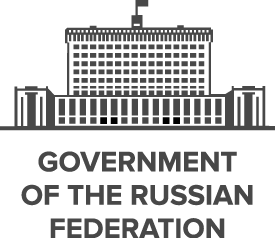Founded in the 12th century, the Principality of Muscovy was able to emerge from over 200 years of Mongol domination (13th-15th centuries) and to gradually conquer and absorb surrounding principalities. In the early 17th century, a new ROMANOV Dynasty continued this policy of expansion across Siberia to the Pacific. Under PETER I (ruled 1682-1725), hegemony was extended to the Baltic Sea and the country was renamed the Russian Empire. During the 19th century, more territorial acquisitions were made in Europe and Asia. Defeat in the Russo-Japanese War of 1904-05 contributed to the Revolution of 1905, which resulted in the formation of a parliament and other reforms. Repeated devastating defeats of the Russian army in World War I led to widespread rioting in the major cities of the Russian Empire and to the overthrow in 1917 of the imperial household. The communists under Vladimir LENIN seized power soon after and formed the USSR. The brutal rule of Iosif STALIN (1928-53) strengthened communist rule and Russian dominance of the Soviet Union at a cost of tens of millions of lives. After defeating Germany in World War II as part of an alliance with the US (1939-1945), the USSR expanded its territory and influence in Eastern Europe and emerged as a global power. The USSR was the principal adversary of the US during the Cold War (1947-1991). The Soviet economy and society stagnated in the decades following Stalin’s rule, until General Secretary Mikhail GORBACHEV (1985-91) introduced glasnost (openness) and perestroika (restructuring) in an attempt to modernize communism, but his initiatives inadvertently released forces that by December 1991 splintered the USSR into Russia and 14 other independent republics.
Following economic and political turmoil during President Boris YELTSIN's term (1991-99), Russia shifted toward a centralized authoritarian state under the leadership of President Vladimir PUTIN (2000-2008, 2012-present) in which the regime seeks to legitimize its rule through managed elections, populist appeals, a foreign policy focused on enhancing the country's geopolitical influence, and commodity-based economic growth. Russia faces a largely subdued rebel movement in Chechnya and some other surrounding regions, although violence still occurs throughout the North Caucasus.
Russia is a semi-presidential federation.
Members:
Resources
Displaying 751 - 755 of 1046Ministerial Decree No. 388 amending Ministerial Decree No. 371 validating the Regulation on the Federal Agency of Marine and Fluvial Transport.
Item 5.4² shall be amended to add the following wording: “In the name of the Russian Federation shall apply for state registration of property right of the Russian Federation to land plots required for marine harbour and fluvial port facilities and infrastructure of inland waterways of the Russian Federation, and also of other ownership rights to such sites that is recognized (is originated) in accordance with the federal laws”.
Amends: Ministerial Decree No. 371 validating the Regulation on the Federal Agency of Marine and Fluvial Transport. (2004-07-23)
Ministerial Decree No.190 amending Ministerial Decree No. 450 validating the Regulation on the Ministry of Agriculture.
Item 1 shall be amended to add the following wording: “Safe management of pesticides and agrochemicals”.
Amends: Ministerial Decree No. 450 validating the Regulation on the Ministry of Agriculture. (2008-06-12)
Regional Law No. 106-ZSO “On classification of land areas as protected areas”.
This Regional Law establishes the modalities of classification of land areas as protected areas, specifying that the following land categories shall be considered protected areas: (a) protected natural territories; (b) environmental protection land; (c) recreational land areas; (d) land of historical and cultural heritage; and (e) particularly valuable land. Competent public authority for attribution to the aforesaid land categories the status of protected area shall be regional executive body and local government.
Regional Law No. 801-01-ZMO “On cultural heritage”.
This Regional Law regulates relations in the sphere of conservation, protection and management of the objects of cultural heritage. Regional Administration shall ensure mapping of the boundaries of land areas containing objects of cultural heritage and state registration of the objects of cultural heritage. Identification of the objects of cultural heritage shall be performed by the by the authorized regional state institution in the sphere of cultural heritage.
Amended by: Regional Law No. 1894-01-ZMO amending Regional Law No. 801-01-ZMO “On cultural heritage”. (2015-07-03)
Regional Law No. 462-01-ZMO “On regulation of land relations”.
This Regional Law establishes priorities of the regional land policy as follows: (a) conservation of most valuable land; (b) conservation of agricultural land and protected areas; (c) realization of the right of regional residents to land allotment; (d) land tenure by methods ensuring conservation of ecosystem; and (e) payment of land charges for land use. Public and municipal land can be allotted to citizens in ownership, on lease, permanent (open-ended) tenancy or fixed-term tenancy free of charge.


